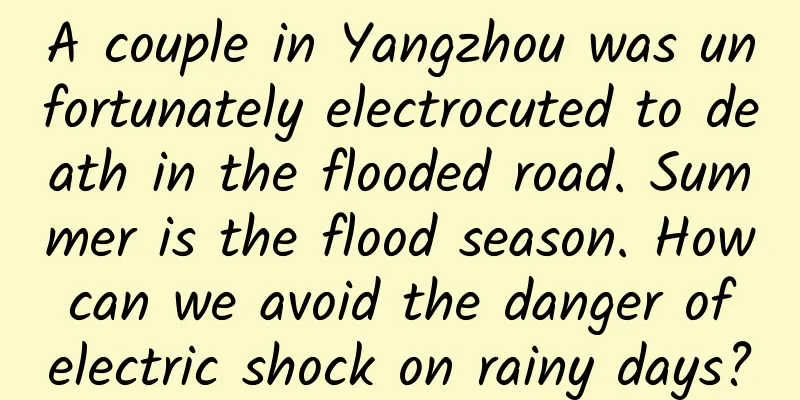What is your chance of encountering Aurora? This index is the key

|
Since 2019, the sun has entered its 25th activity cycle, with increasingly frequent activities. The peak of activity will come around 2025, and solar flares and coronal mass ejections may occur frequently. In April 2023, a strong geomagnetic storm occurred, the strongest solar activity since the beginning of the 25th solar activity cycle, which led to gorgeous auroras in Mohe, Heilongjiang and Karamay, Xinjiang. Affected by solar activity, auroras appeared many times in Mohe, Heilongjiang on November 5 and December 1, 2023. Especially on the evening of December 1, news came from many parts of my country that people had seen auroras. A netizen took a beautiful video of the aurora in the suburbs of Huairou, Beijing, which not only blew up the circle of friends of astronomy enthusiasts, but also made the topic of "Beijing Aurora" a hot search. The aurora has a mysterious and beautiful name - Aurora. Aurora originally refers to a goddess in ancient Roman mythology. She is in charge of dawn and light. She flies to the sky every morning to announce the arrival of dawn to the earth. In 1619, Italian astronomer Galileo created the term "Aurora Borealis" in the name of Aurora, giving it a new meaning. "Aurora, the Goddess of the Dawn", a fresco by Guercino from 1621 to 1623 Image source/Wikipedia Auroras often appear near the Arctic Circle and the Antarctic Circle. Auroras observed in the Northern Hemisphere are called "Northern Lights" and those observed in the Southern Hemisphere are called "Southern Lights." Of course, auroras are not exclusive to Earth, but also occur on other planets with magnetic fields in the solar system. What causes the Aurora? The aurora is a natural luminous phenomenon in the sky above high latitudes. When the solar wind magnetic field reconnects with the Earth's magnetic field, the high-energy particles of the solar wind will enter the Earth's poles along the reconnected magnetic field lines, causing geomagnetic disturbances while violently colliding with oxygen and nitrogen atoms in the atmosphere. During the collision, the high-energy charged particles transfer their energy to the atmosphere, thereby exciting the oxygen and nitrogen atoms to a higher energy state. When the oxygen and nitrogen atoms relax back to a lower energy state, they release photons, which are the aurora we see. This process is similar to the light-emitting principle of neon lights or fluorescent lights. Auroras appear primarily at the Earth's North and South Poles and are mirror images of each other. When an aurora becomes active in one hemisphere, it also becomes active in the other hemisphere. The aurora is centered on the magnetic poles and appears as a ring-shaped area, which is also called the "Auroral Egg". During larger geomagnetic storms, the Auroral Egg will expand away from the poles, so the aurora can be seen in most areas near the Arctic and Antarctic Circles. Auroras are a manifestation of geomagnetic storms. There are two types of solar events that can produce geomagnetic storms associated with bright, active auroras. The first is a coronal mass ejection (CME), which can be described as a burst of tens or billions of tons of plasma from the Sun, traveling at thousands of kilometers per second and arriving in space around the Earth two to three days later. When a CME reaches Earth, it can cause geomagnetic disturbances that produce some of the brightest and most active auroras, which extend farthest toward the equator. The second type of solar event that can produce moderate-sized geomagnetic storms is called a "coronal hole." Coronal holes are the source of high-speed solar wind. When high-speed solar wind reaches Earth, it can produce active auroras. However, geomagnetic storms and auroras caused by coronal holes are far less bright and active than those caused by CMEs. Mild solar winds can also produce auroras, so even in the absence of large geomagnetic storms, some areas will usually have weak auroras. The probability of auroras appearing around the spring and autumn equinoxes is also greater than in winter and summer. This is because the Earth's axis of rotation is perpendicular to the sun's magnetic field lines, and the two magnetic field lines overlap for the best effect. The time to see auroras at night after the spring equinox is not as long as after the autumnal equinox. This image shows the magnetosphere and the location of electron acceleration (red area on the left). The red area on the right is where the electrons are accelerated to produce the nighttime aurora and is also the source of the geomagnetic storm process. Image source/NOAA/SWPC Colors and shapes of the aurora The auroras we usually see on the Internet, on TV, and in newspapers are mostly green, but in fact, there are many colors of auroras. This is related to the composition of the earth's atmosphere. The content of oxygen and nitrogen in the atmosphere determines the color of the aurora. The content of oxygen and nitrogen is also different at different altitudes. Red auroras appear at the highest altitudes, where the solar wind reacts with oxygen atoms at 300 kilometers to radiate 630 nanometers of red light. This color of aurora is not easy to see and can only appear when the sun is active. Green auroras appear at intermediate altitudes, where the solar wind reacts with dense oxygen atoms at 120 to 400 kilometers to radiate 557 nanometers of green light. Purple auroras appear at the lowest altitudes and come from nitrogen atoms. Often, some people say that the visual aurora is pale white. This is not true, and it is actually a manifestation of the human eye's night vision. The human eye prioritizes brightness without distinguishing colors. Only when the aurora is quite bright can the human eye distinguish true green, red and other colors. In addition, digital cameras are usually more sensitive than the human eye and can capture the aurora and the colors of the aurora when it is too dim for the human eye to see. In addition to different colors, auroras also have different shapes. Usually, auroras look like curtains, distributed roughly in the east and west directions, and will twist and swing with the geomagnetic field, just like the wind blowing on a curtain. In addition to curtain-like auroras, there are also ray-shaped auroras, uniform auroras, etc. In addition, they can also be divided into proton auroras and electron auroras according to the source of the excited particles. This image shows Earth's magnetic field lines and the electrons that travel along them into the upper atmosphere. The green shaded area shows the auroral egg centered at the magnetic pole. Image credit: NOAA/SWPC Conditions for viewing the Aurora Whether you can see the aurora depends on two factors: geomagnetic activity (the degree of disturbance in the Earth's magnetic field) and your location. Further factors to consider are the weather, light pollution, and the full moon in the observation area. Auroras are more visible in high latitudes, usually in a belt of about 5 degrees wide, at 60˚ to 75˚ latitude, near the Arctic and Antarctic Circles. In high latitudes such as Iceland, Norway, Sweden, and Alaska, the auroras can be observed more than half of the nights of the year. Auroras in the evening and morning are less active and less interesting to observe. Midnight auroras are the most active and brightest. In the early morning, the auroras will appear more like clouds, flickering repeatedly, and then disappear as the sun rises in the east. When space weather activity increases and more frequent and larger solar storms occur, auroras will extend toward the equator and appear in lower latitudes. The worst solar storm ever recorded occurred in September 1859, the "Carrington Event," which caused eight days of severe space weather, and auroras were even seen near the equator. The dragon-shaped northern lights, photographed in Iceland on February 6, 2019. Photo by Zhang Jingyi See your chances of encountering the Aurora To know if you have a chance of seeing the Northern Lights, you need to check the geomagnetic Kp index (global magnetic field index), an aurora forecast map, and your local magnetic latitude. 1. Geomagnetic Kp index This is a simple geomagnetic index that is used to describe the intensity of geomagnetic disturbances within every 3 hours of a day, using numbers from 0 to 9 to divide the intensity levels. There is an approximate relationship between the Kp index and the latitudinal range of the auroral egg. This relationship corresponds to the geomagnetic latitude, not the geographic latitude. 2. Aurora forecast map The brightness and location of the aurora are usually shown as a green oval centered on the Earth's magnetic pole. When the aurora is forecast to be more intense, the green oval will turn red. The latest aurora forecast map can be found on the NOAA (National Oceanic and Atmospheric Administration) Space Weather Prediction Center (SWPC) page. NOAA's 30-minute aurora forecast chart, Kp=3 quiet aurora, Kp=5 moderate aurora, Kp=7 active aurora, Kp=9 very active aurora Image source/NOAA/SWPC 3. Geomagnetic latitude The Earth's geographic poles and magnetic poles are not exactly the same, there is an angle of 11.5˚, so the geographic latitude is not equal to the geomagnetic latitude, and the Earth's magnetic axis is also offset to North America. Therefore, the geomagnetic latitude is the latitude we need. Please note that the edge of the aurora does not have to reach your magnetic latitude to be seen by you. In fact, you can see it 4 to 5 degrees of latitude away from the edge of the aurora. So, do you know the magnetic latitude of your location? Here is a simple method to help you. The geographic latitude of your location minus about 10˚ is the geomagnetic latitude you want. Once you know the magnetic latitude of your location, you can use the current geomagnetic Kp index and the aurora forecast map to determine whether you can see the aurora. Most of my country is in the mid-latitude zone. Even Mohe, the northernmost part of my country, has a latitude of only 53˚. There are not many opportunities to see the aurora, and the aurora you will most likely see will be mainly red. Moreover, if you want to see the aurora, you need to choose a clear night without interference from city lights or moonlight. By Yu Jianfeng |
Recommend
"Operating core users" actual case analysis!
Every product operates core users, but also encou...
How did the 3D printed cake come about and what does it taste like?
Cake is an ancient Western pastry, usually made i...
This hairy crab can also put on its own vest! But it's not the most amazing new species of the past year
What good things have scientists discovered in th...
WeChat Mini Program Mall Ranking, What Are the Factors Affecting Mini Program Ranking?
Open the APP on your phone, no matter which e-com...
Why does school always start in September? It turns out that there is a meteorological reason!
The new school season is coming Parents have been...
Cat meme video goes viral! What is the magic of this video for young people?
Recently, various official accounts have been pos...
New Ford Edge official pictures released
Recently, Ford officially released official pictu...
How much does it cost to make a large turntable mini program in Meizhou?
WeChat Mini Program is an application that users ...
Foreign server rental price list, overseas server rental
Foreign server rental price list, overseas server...
Corn's ancestor was a weed? Yes, and it's still there today
The history of human civilization is accompanied ...
Can eating onions, fungus, and drinking vinegar "soften blood vessels"? These cognitive misunderstandings need to be understood
We often hear people say that eating certain food...
A simple and easy-to-understand financial management course, where the bank president teaches you how to manage money
Ten-point classroom super practical and practical...
How to operate an event (Part 2)
How to operate an event (Part 1) To operate produ...
How to query Tencent social advertising promotion effect data!
Data query method The detailed data reports in th...
Late-night snacks linked to certain cancers? Don’t eat when you’re hungry before bed!
As staying up late gradually becomes a lifestyle ...







![[Smart Farmers] Understanding in one picture: How to verify the safety of genetically modified foods?](/upload/images/67f23d01c201f.webp)

